D'Estrees Bay Self Guided Drive
Stop 7- Wheatons Beach
D’Estrees Bay is home and refuge to many birds. Wheatons Beach is a good place to observe the birds that frequent the area. Some of these birds live here all year round, while others arrive seasonally. There are also nomadic birds of "no fixed address” and the occasional vagrant far from its normal home.
Rock Parrot
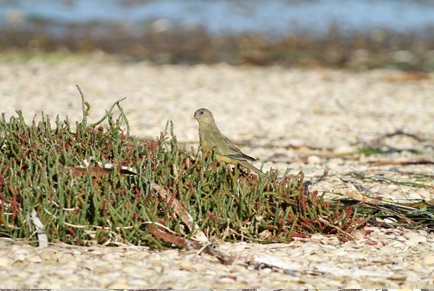
This olive-green and blue parrot can be seen along the high tide zone. Small flocks of Rock parrots forage for seeds here amongst the sea-rocket, saltbush, Nitre-bush and samphire. The seeds of the Biddy-biddy (Acaena novae-zelandiae) are a favorite food which grows along the D’Estrees Bay Road. Rock Parrots are mainly observed from January to March at D’Estrees Bay. They arrive here in December, after breeding on offshore islands to the west and stay until about August.
Ruddy Turnstone
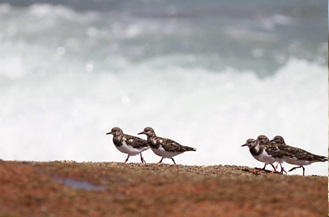
Ruddy Turnstones are thickset, well camouflaged black, white and brown birds with short orange legs. They turn over kelp and stones along the beach in search of food. Their short, strong beak us well adapted to this activity. When feeding these birds walk or run from one spot to the other sometimes quarreling noisily over the perceived ownership of intended food supplies. In autumn most of these birds leave here and migrate to their breeding quarters in Siberia and Alaska returning again in late spring.
Sooty Oystercatcher
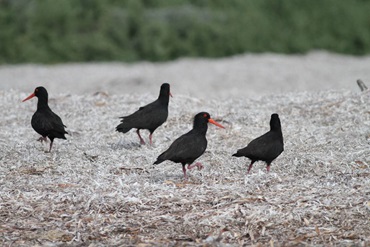
Sooty Oystercatchers are black birds with pink legs often found feeding on limpets, periwinkles and mussels that they pick off rocks. They often hammer shells against a stone to free their food. Between June and January Sooty Oystercatchers lay their eggs in depressions in the sand, generally among rocks, seaweed, pigface and shells.
Australasian Gannet
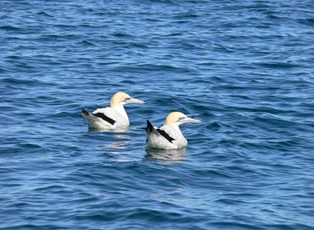
Between April and September these large black and white birds with yellow heads are seen soaring and gliding over the ocean patrolling the waters, watching for a glimpse of a fish. On sighting a fish, gannets fold their wings back and plunge into the ocean from upto 30 meters away, like speeding arrows. Turning to rinse out the water, gannets catch and swallow their fish before ascending into the air, these birds are too frequently found washed ashore after becoming entangled in carelessly discarded finding line.
Hooded Plover
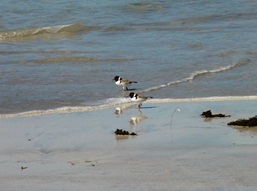
These small black, white and grey birds have a distinctive red beak and eye rim. They are often seen racing the tide in pairs and small roups, as theyfeed on insects and other invertebrates trapped on the wet sand amongst the drift. Hooded Plovers lay their two or three eggs from late winter to summer in small scrapes in the sand just above the high tide mark. Car, bike and human traffic often accidentally trample nests. These birds are listed as vulnerable under the Endangered Species Protection Act 1992.
Crested Tern
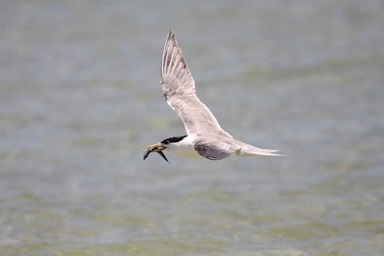
Crested Terns form large groups along the shore line which are common around Australian coastlines. When over the ocean they are often plunging into the sea after small fish. A mating pair may also be twisting and spiraling in a spectacular aerial display. They nest in large colonies on offshore island right around the coast.
Friends of Cape Gantheaume Activities
For the Bird List developed by the Friends of Cape Gantheaume click HERE
